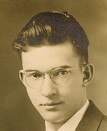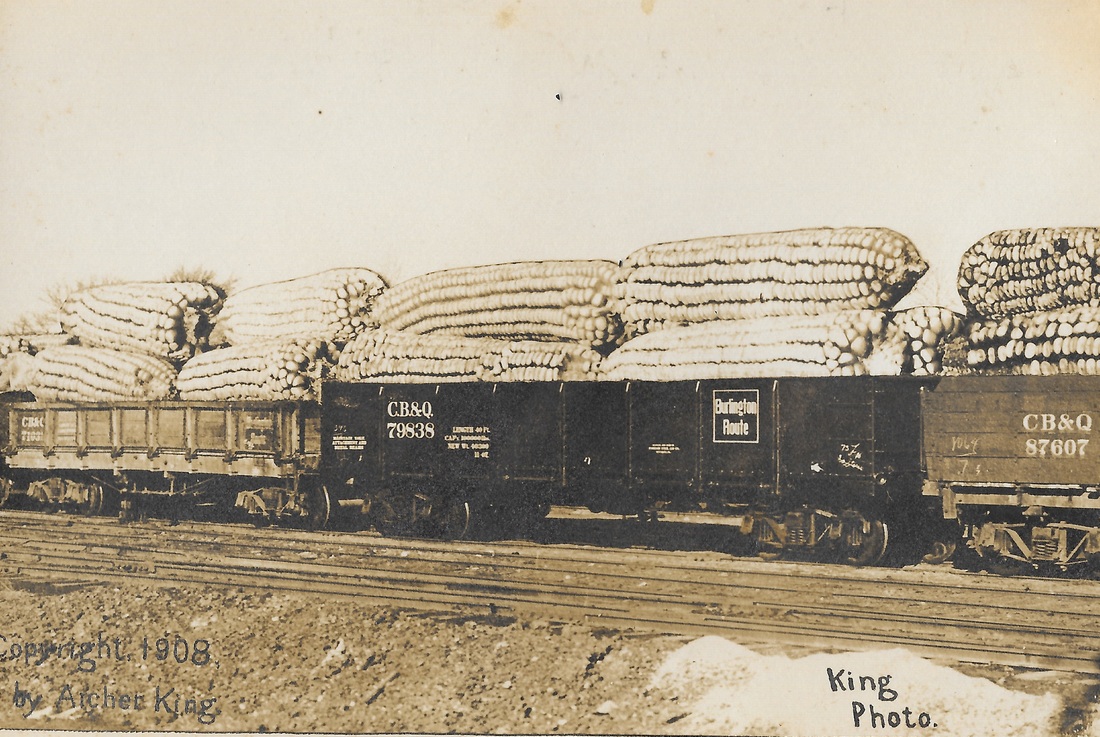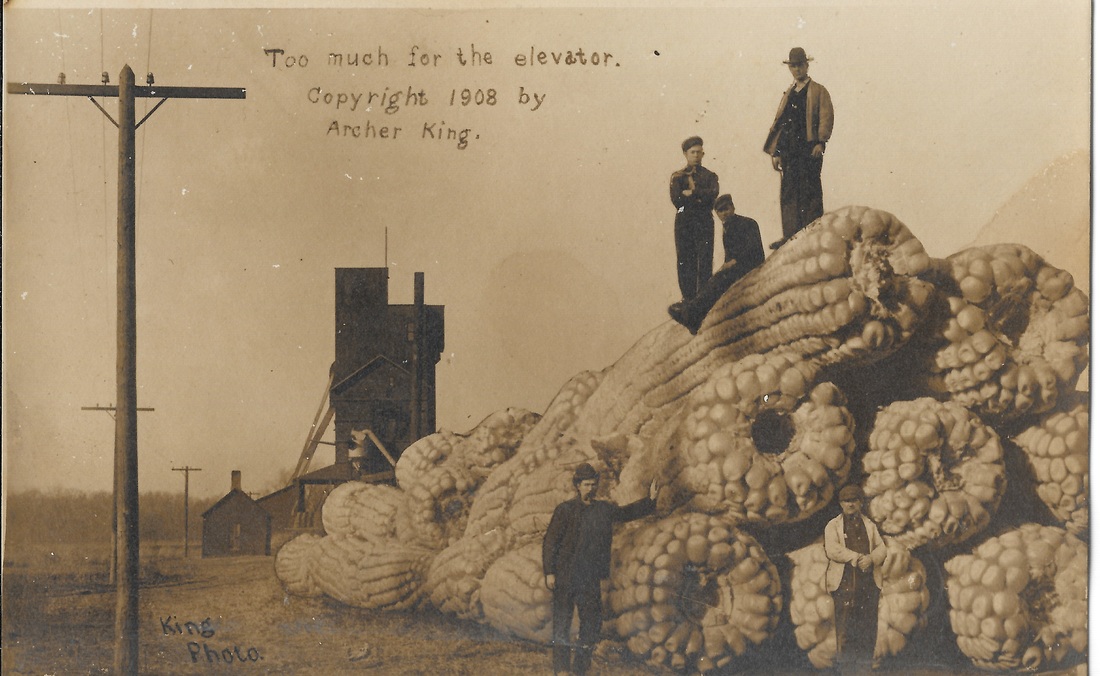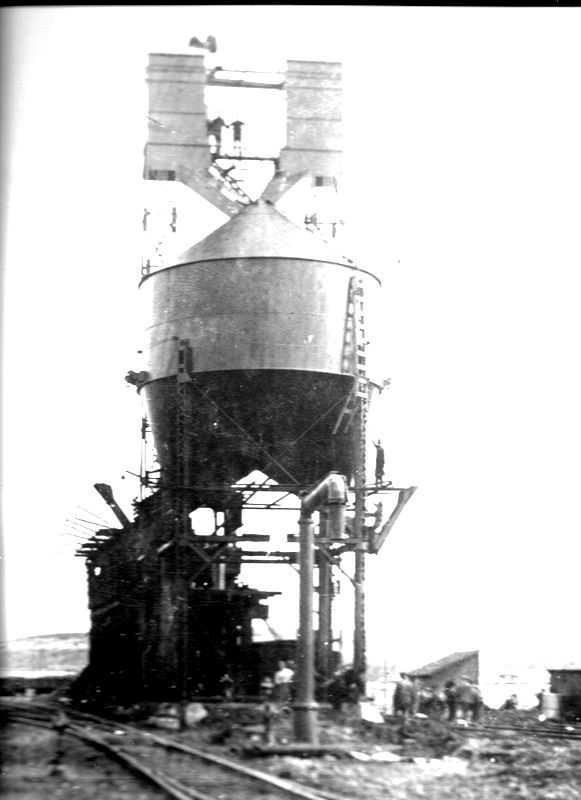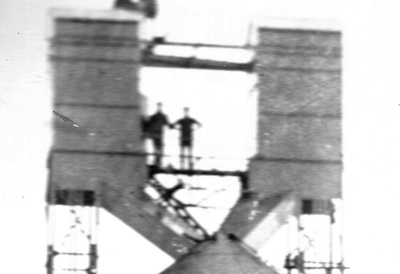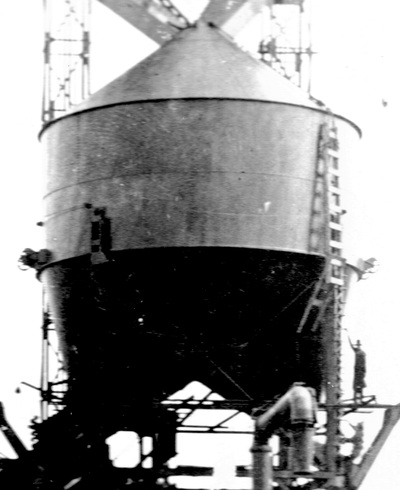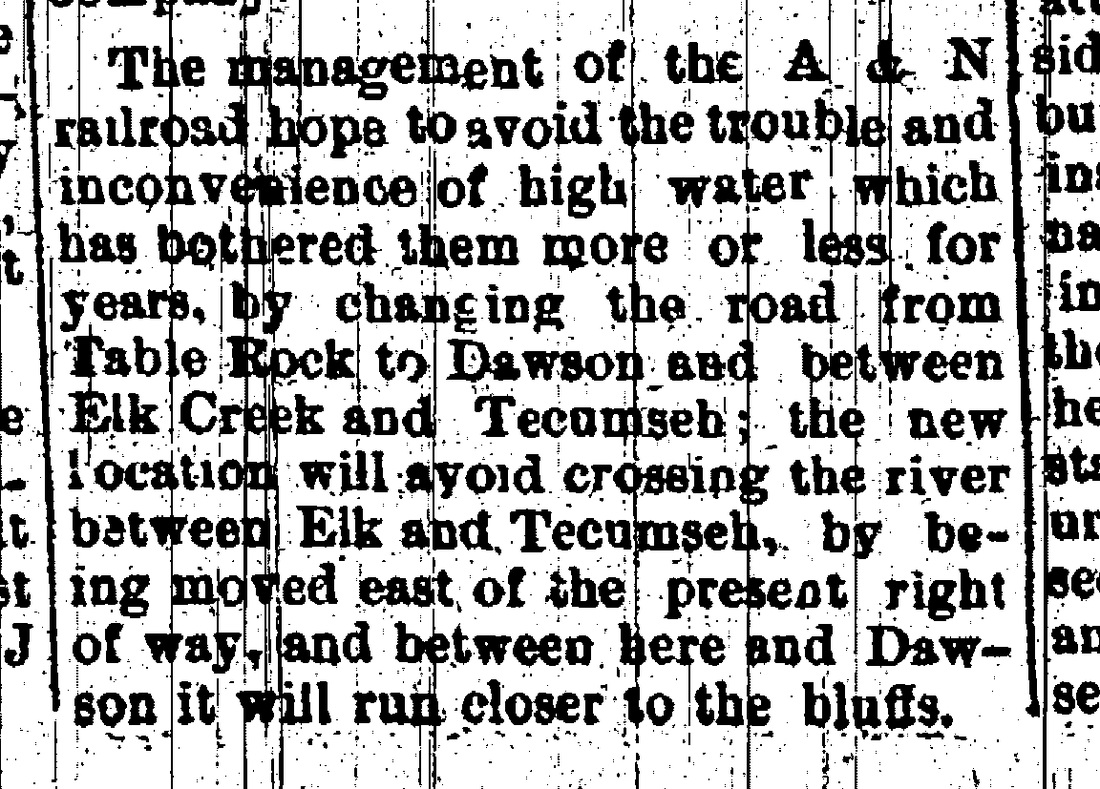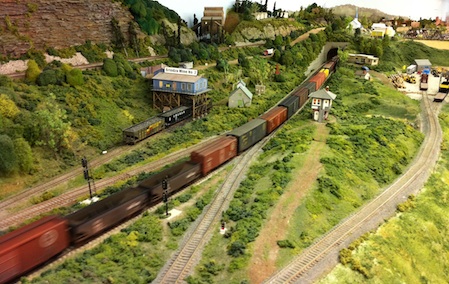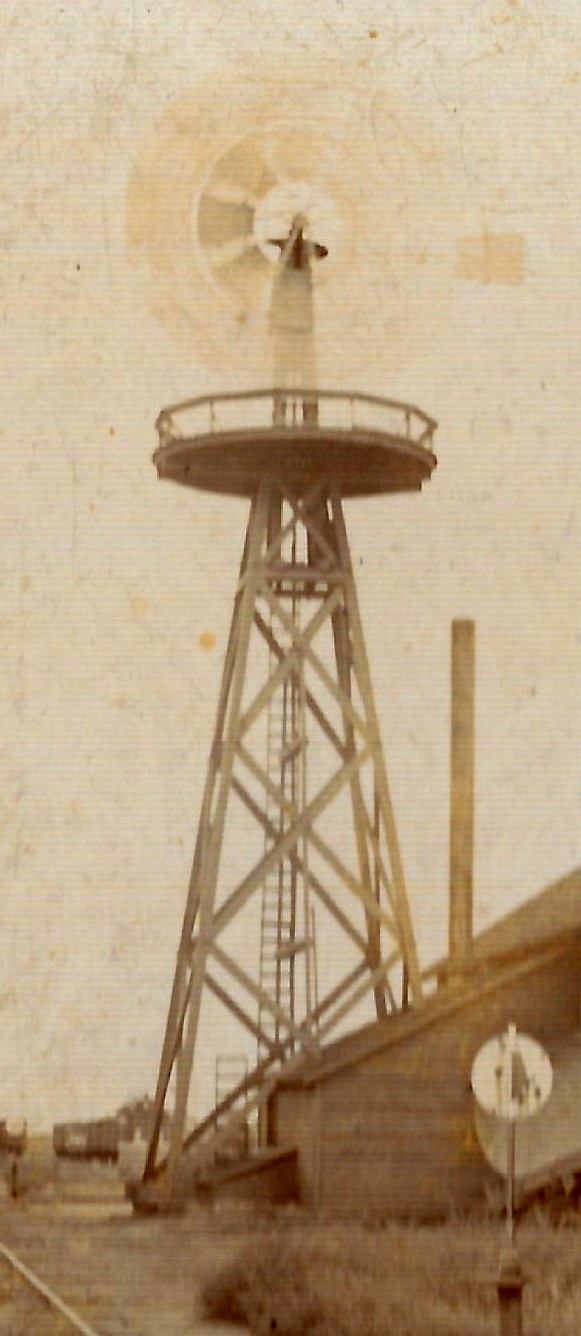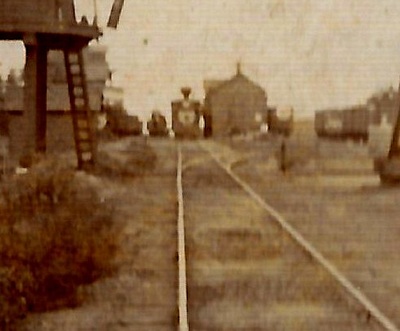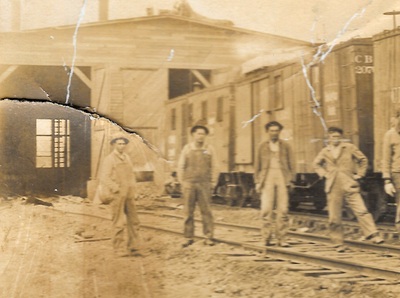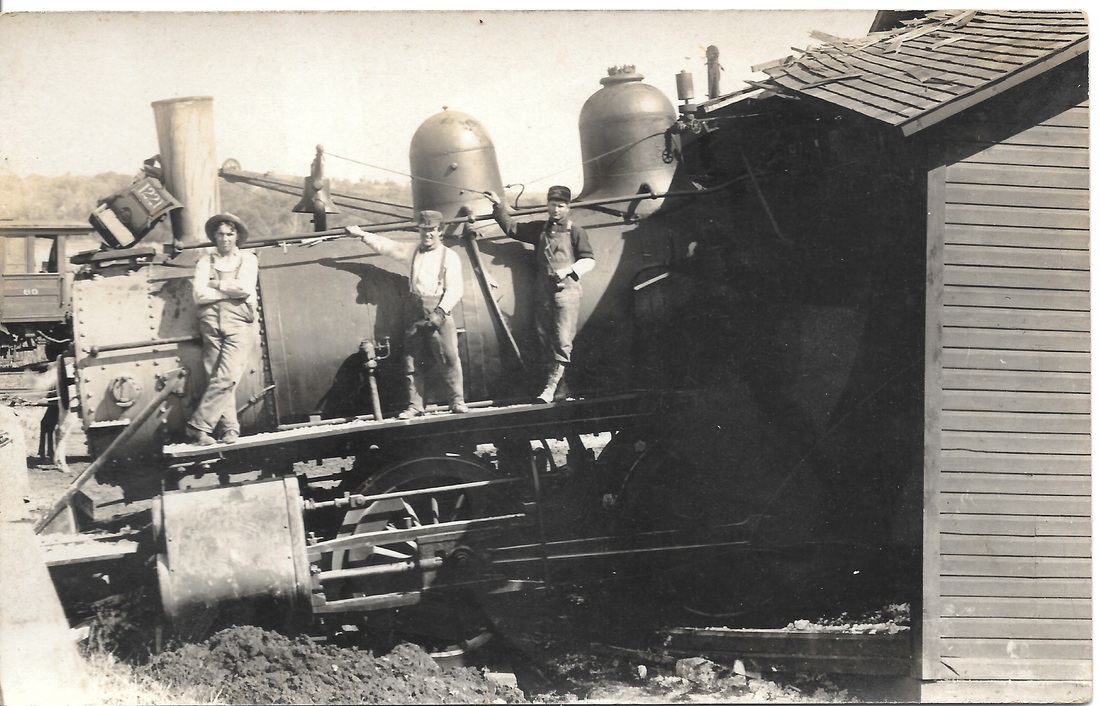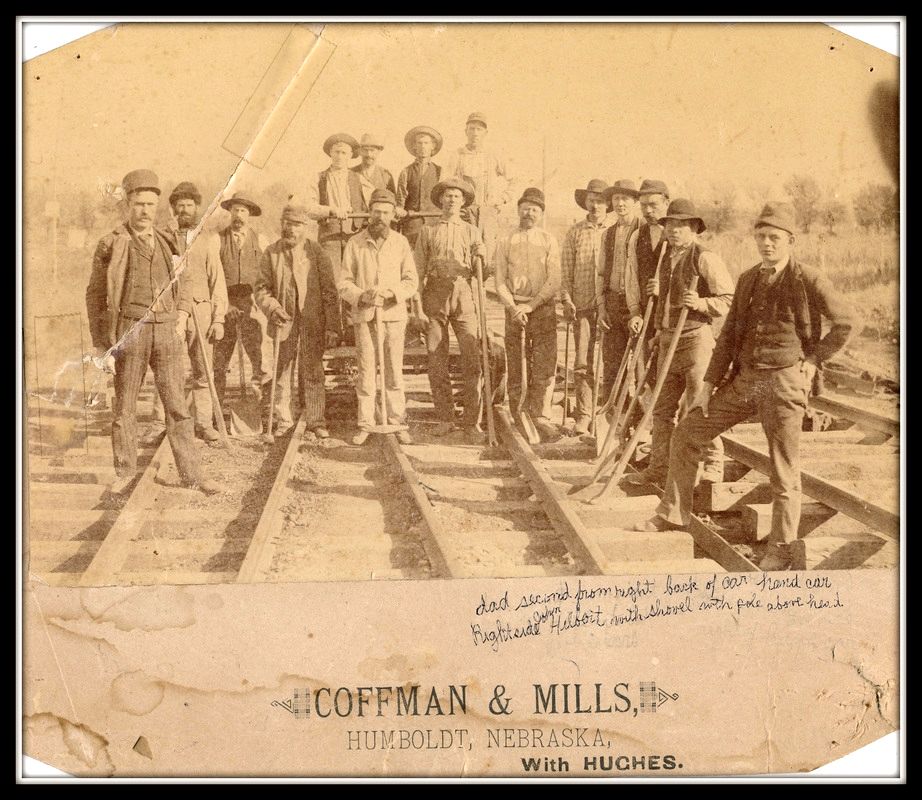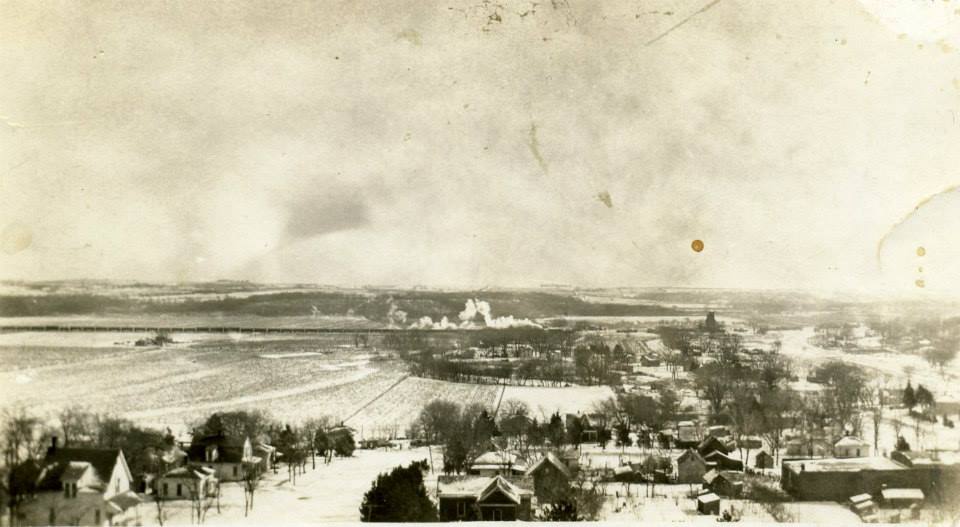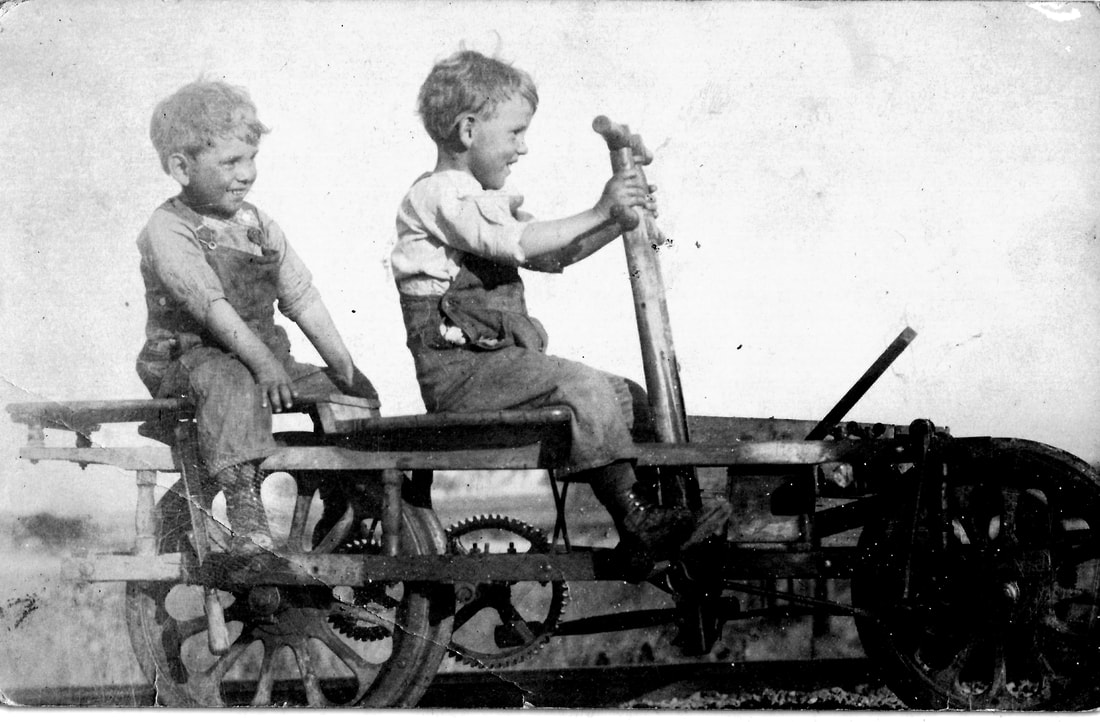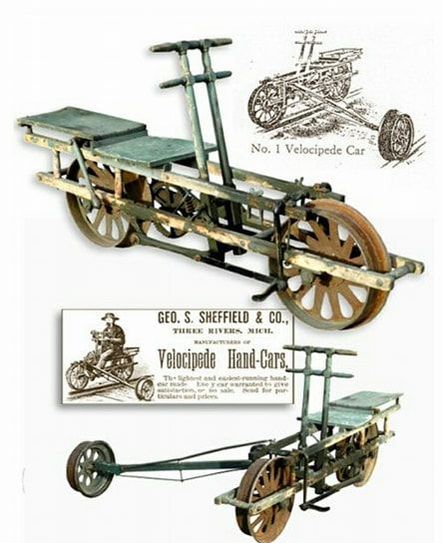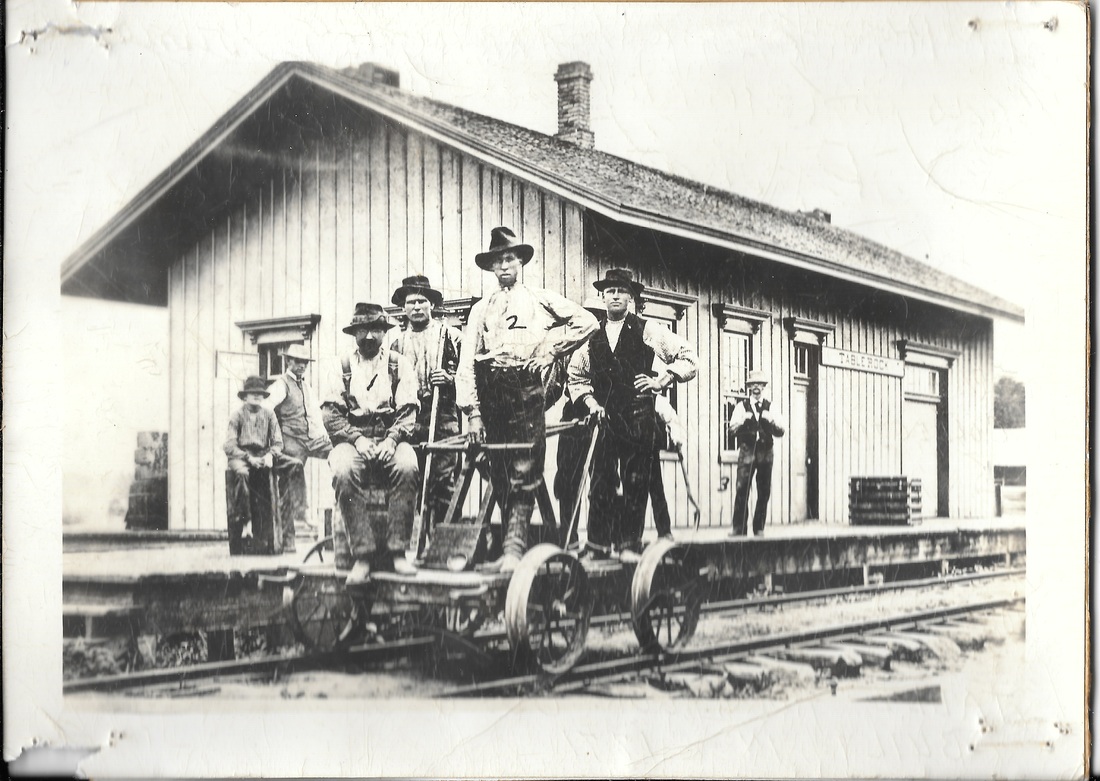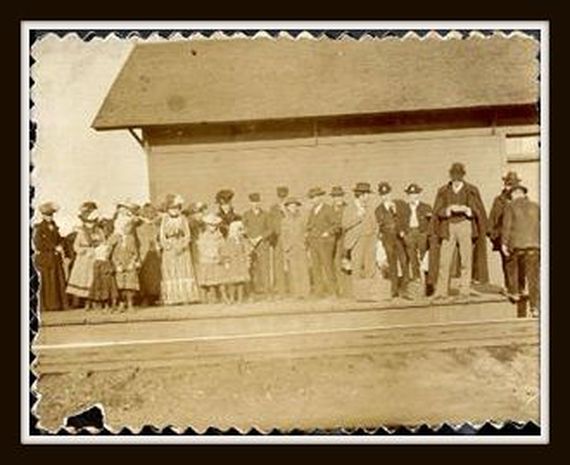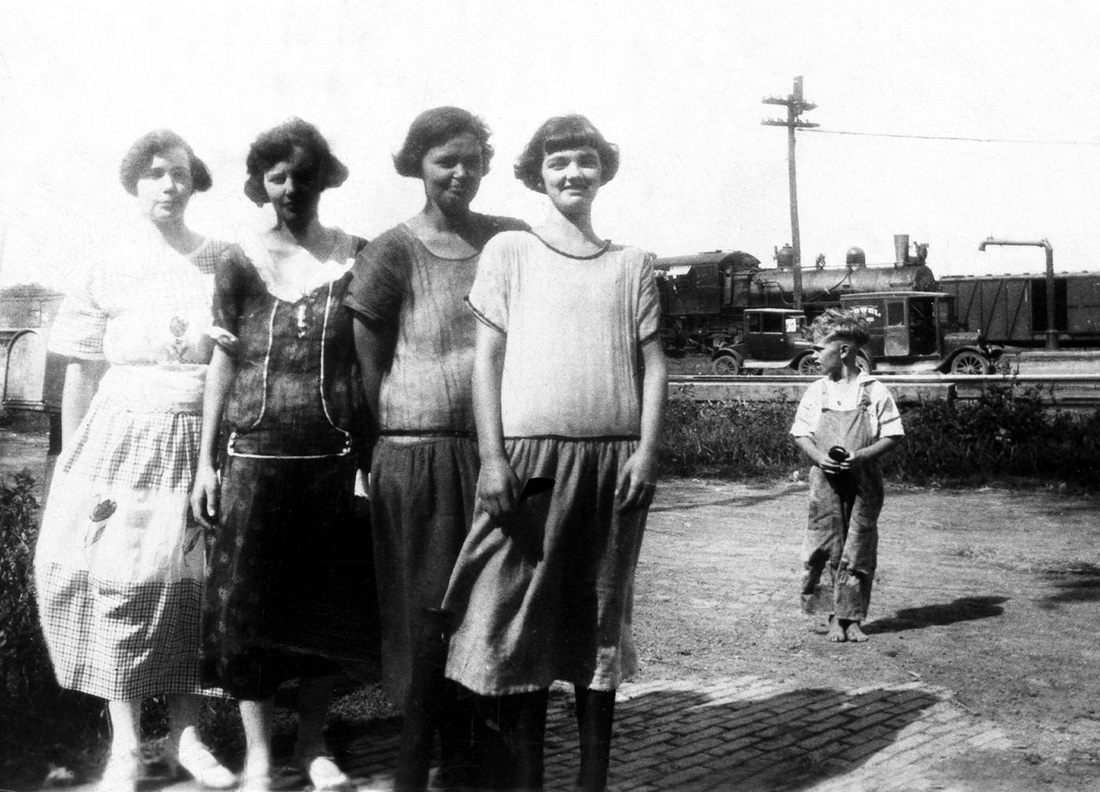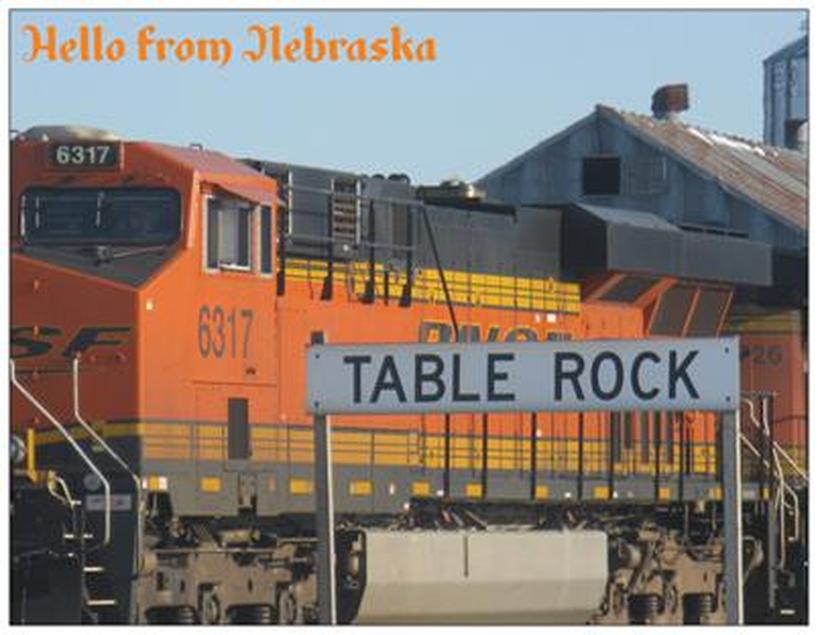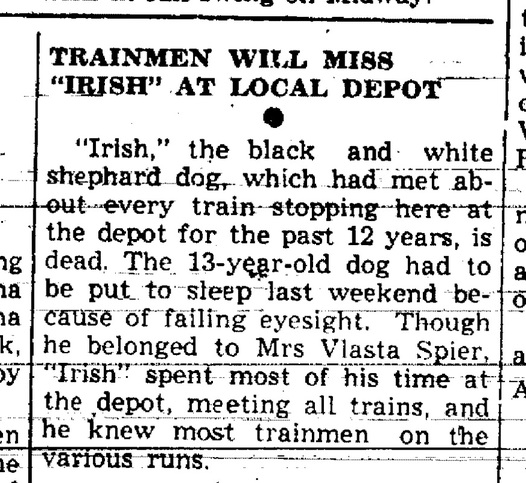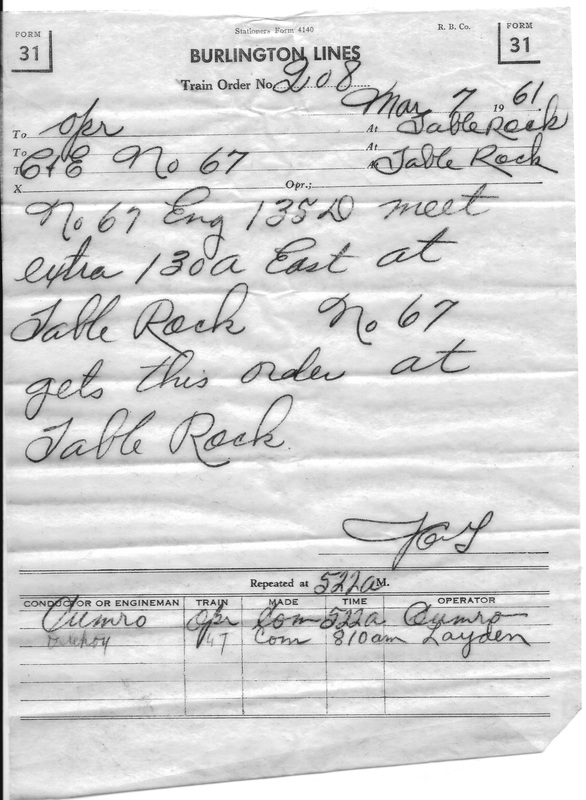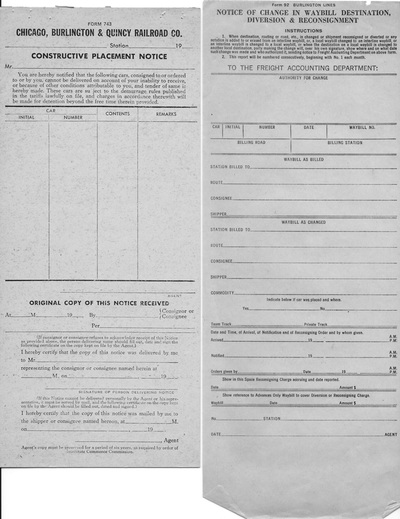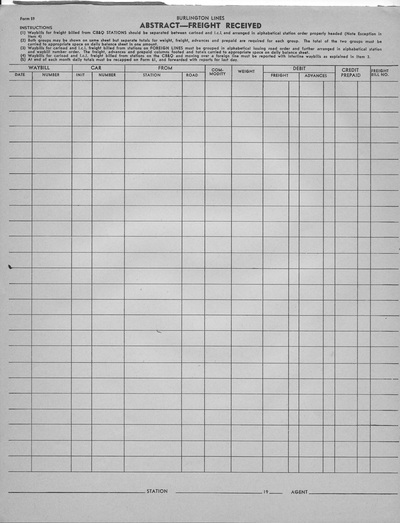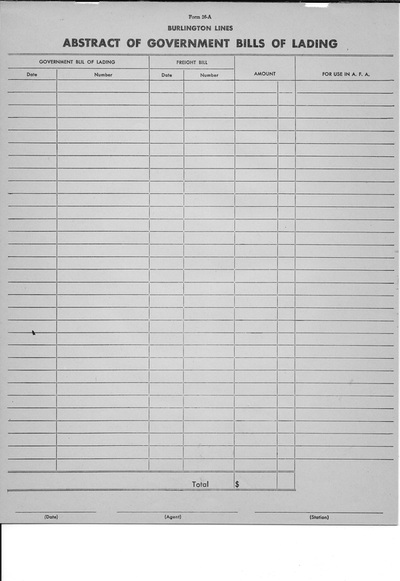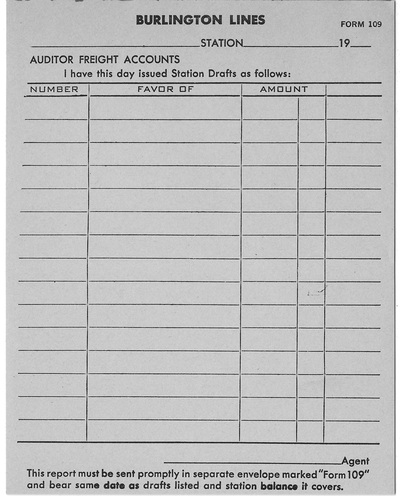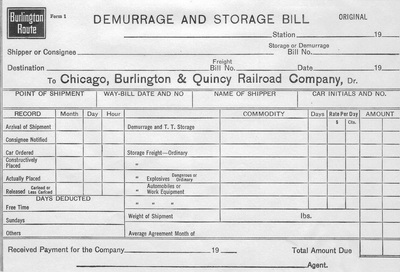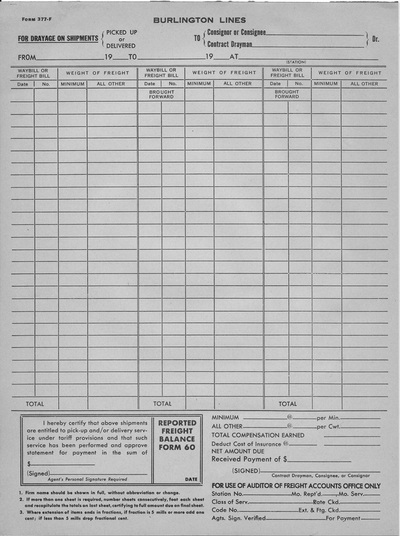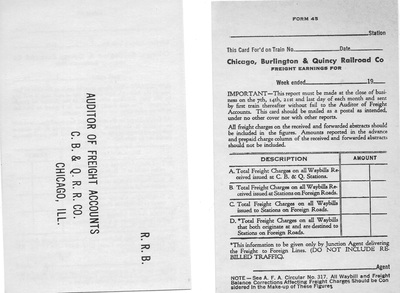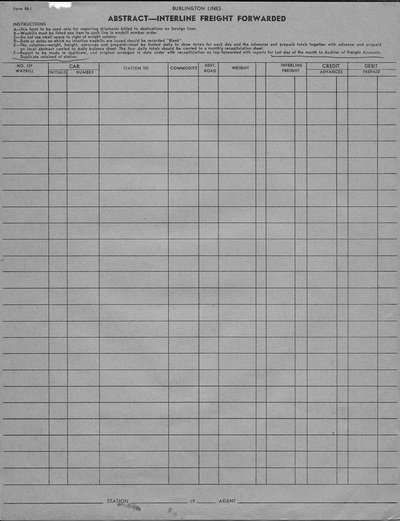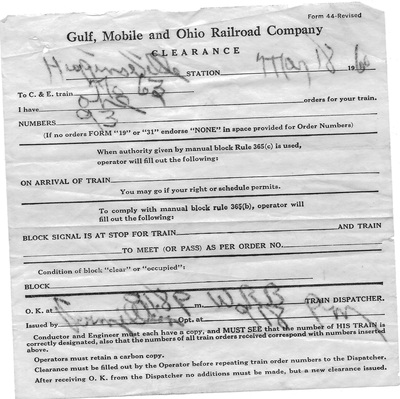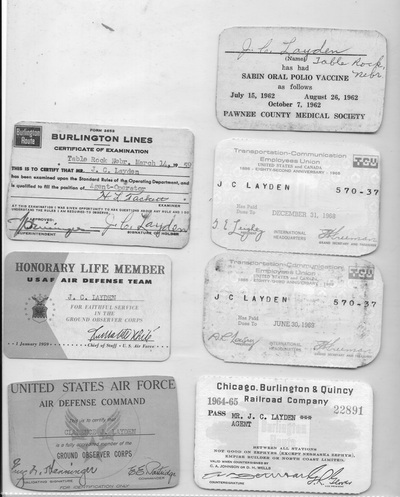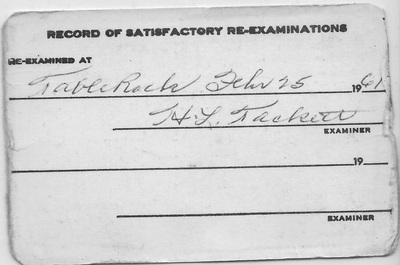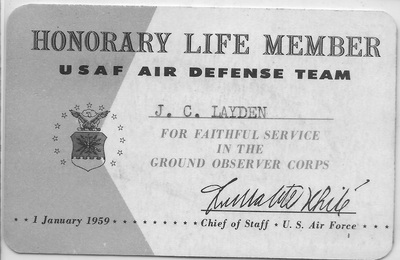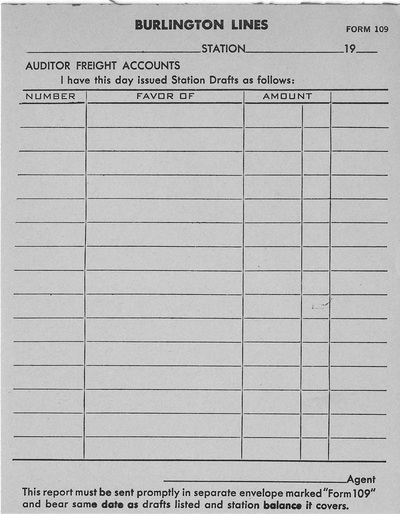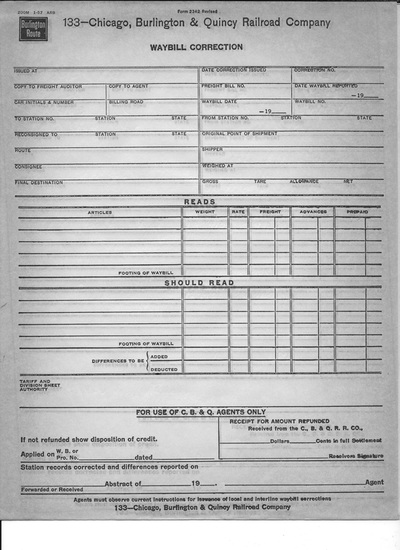trains in table rock, nebraska
Rail ownership
The Atchison & Nebraska brought train service to Table Rock, building a north-side line, 1871. The Burlington & Missouri succeeded it, then the CB&Q, and eventually Burlington Northern, then BNSF. The east-west line was originally the Wymore extension of the Republican Valley Railroad.
Thank you to Historical Society member Larry Layden for copies of stock certificates:
Thank you to Historical Society member Larry Layden for copies of stock certificates:
STEAM ENGINES IN MOTION
I'm told that photographs of steam engines in motion are uncommon. We have four.
pHOTO #1 OF 4 of steam engines in motion, train on bridge north of town (Photo 869)
pHOTO # 2 OF 4 of steam engines in motion, eMORY WATCHES a train go by (Photo 1813)
|
Here is another picture of a steam engine in motion. It has a poignant story to go with it. This is a Purcell family photograph provided by Historical Society member Terry Korrel. She ways that it shows Emory, a small boy from the orphan train that Jack and Della Purcell took in, watching a train go by. The Purcells farmed north of town. Emory was from New York City and did not do well in Table Rock. He was eventually given his heart's desire of going back to New York. He became a policeman there. He kept in touch with the Purcells his whole life. Photo 1813.
|
Historical Society member Luella Hinrichsen says, "I love the little boy watching it go by, the engineers all would wave to you as they went by."
|
PHOTO #3 OF 4 OF STEAM ENGINES IN MOTION, A 1941 PHOTO BY TABLE ROCK AMATEUR PHOTOGRAPHER ARVID BLECHA (Photo 2316)
|
They say that Arvid loved to take pictures. In particular he loved to take pictures of trains almost as much as he loved to ride them. In his lifetime he traveled about and took many many pictures of trains, noting information about them. This photograph is from an album of photos taken in 1941 and 1942 that Arvid put together; each photograph has a large negative tucked behind it. He identified this photograph as a train about to pass below the viaduct in Table Rock. Photo 2316.
|
PHOTO #4 OF 4 OF STEAM TRAINS IN MOTION, RIVER BRIDGE BY ARCHER KING (pHOTO 1611)
Archer King was a professional photographer in Table Rock with offices in Table Rock and Shubert, until he moved to Pawnee City in about 1918. This is a panel of the draft of a stereoptican card that he made. It does not identify the location nor is it dated. Rulo, Brownville, Nebraska City, Plattesmouth?
more pictures!
super trains for super corn!
Archer King captured the display of railroad expertise in transporting then-typical crops for a 1908 postcard. King was one of the earliest practitioners of the art of novelty postcards. Photo 1619.
Historical Society member Laura Turnbull, Archer King's daughter, shared the postcards above and below (and many others). She said she believes that his novelty postcards were made by meticulous cut-and-paste of multiple photographs, and that the sources were usually people and places in and around Table Rock. This may be around a railroad somewhere near. The men may be from Table Rock, if you only knew who!
Does the 1908 photo above show Table Rock? Here is a picture at Table Rock taken from the Hotel Murphy, which was across from the depot. Is the grain elevator in the distance the one in the postcard above? There may be minor differences. The photo below was probably taken a number of years after the postcard, but no later than 1930, when the Murphy burned down. The woman's dress looks like -- mid teens?
Flooding at railroad bridge north of town
Photo 425:
building a coaling tower/coal chute
at the depot
|
Photo 255. In a photo lower down on the page (Photo 618), you see a rail car parked underneath as though getting coal. Take a look at the pump looking thing on a closeup below: is it connected with the coal, or is it a one-stop sort of thing? Railroad buffs, speak up!
|
Flooding at the depot, undated
Photo 423:
June 16, 1898 - The A & N is changing its lines to address flooding problems.
moving a rail line --
by horse & by steam engine
the mccourtney graders moving a rail line
|
Charlie McCourtney of Table Rock ran a grading outfit, McCourtney Grading. They did anything involving earth moving -- dams, water ways, and, in this instance, moving a rail line. The photo is undated and the location unidentified. Thank you to member Delores McCourtney Penkava for sharing this picture of her grandpa McCourtney. He is the one in the lower right.
|
digging a new line by steam

Digging a line. The track to the left, made up with hedge posts instead of ties, is called a Shoe Fly, according to old railroader Larry Layden. It was used as a temporary line such as when there was a derailment or a section of track was flooded out. This scene is near Table Rock as at least one of the men is recognizable as being in an 1887 photograph of Table Rock Civil War veterans, Wilber Perry, 3rd from left in overalls and light-colored shirt. The first man on the left also appears in that photograph.
photo 618 - engine 1093
Five men are in the photo. The names of four are annotated on the back of the photo, and the four to which it refers is uncertain. They are George Allen, Rufus Mapes, Nate Myers, and William (Peggy) Glenn. What does the lettering on the clothes of the man on the left mean? Don't know.
Here is the labeling on the back of the picture. There were three photos on a single board, and the lettering at the top correlates with this picture.
photo 874 - a particularly old photo of a depot area
After slight retouching to counter the fading of this photo, fun details can be seen - that is a giant windmill, it's fan in motion. Lots of wood. In the distance, a train pulled up at a two-story depot. The discussions aside, there is a good chance that this is a very very early photo of the depot in Wymore, which was at the other end of the Wymore line that joined the north-south line in Table Rock. Wymore had a two-story depot and, like Table Rock, was an important station. The experts may not have recognized it because it is earlier than anything they have seen. Like Table Rock, which twice replaced depots after a fire, Wymore may have had an earlier structure as a depot, too. In any event, the location is unconfirmed. But virtually all of the photos in our collection were donate by Table Rock people who had Table Rock-related photos in their personal collections. It would make some sense that this photo is related to Table Rock, and if not Table Rock, then Wymore; a large number of rail workers spent their time shuttling back and forth on the Wymore-Table Rock line.
where was photo 874 taken?
Probably more telling is the depot in the distance with the steam locomotive aside it. The depot appears to be one of the standard CB&Q style two-story depots that the railroad built at many of its stations across Nebraska and other western states. These depots had the business area on the first floor, while the second floor contained the living quarters for the agent and his family.
Now, if it’s correct, as per the other depot images you sent, that the first Table Rock depot was a one-story board-and-batten structure (i.e. the one with the guys on the handcar in front), and that the second depot was the one-story building seen in the other image (undeniably Table Rock), then when would this two-story depot have been at Table Rock? The third Table Rock depot, the nice brick and stucco building destroyed in the train derailment, was also a one-story building. (Might it have been the second depot that was greatly remodeled?)
Anyhow, was the first depot (the board-batten building) in use until 1892, when it burned? If so, then again, there’s no time period in which the two-story depot in the distance could have been in service at Table Rock.
I cannot definitely say this isn't Table Rock, though you have my comments as to why it might not be.
I will cc. this message to railroad authority Richard Kistler, the author of THE WYMORE STORY, in case he might have something to add, or a way in which he can help determine if this picture was taken at T.R. or not.
I’ll let you know if Richard has any information to share as to this photo.
Now, if it’s correct, as per the other depot images you sent, that the first Table Rock depot was a one-story board-and-batten structure (i.e. the one with the guys on the handcar in front), and that the second depot was the one-story building seen in the other image (undeniably Table Rock), then when would this two-story depot have been at Table Rock? The third Table Rock depot, the nice brick and stucco building destroyed in the train derailment, was also a one-story building. (Might it have been the second depot that was greatly remodeled?)
Anyhow, was the first depot (the board-batten building) in use until 1892, when it burned? If so, then again, there’s no time period in which the two-story depot in the distance could have been in service at Table Rock.
I cannot definitely say this isn't Table Rock, though you have my comments as to why it might not be.
I will cc. this message to railroad authority Richard Kistler, the author of THE WYMORE STORY, in case he might have something to add, or a way in which he can help determine if this picture was taken at T.R. or not.
I’ll let you know if Richard has any information to share as to this photo.
burlington railroad authority richard kistler's comments about photo 874 and its location
Richard Kistler responded:
The Table Rock website is very interesting, I have viewed it several times since receiving it yesterday.
Unless someone can prove to me that Table Rock once had a two-story depot, I am having difficulty in believing the one view of the windmill and etc with a locomotive in the distance alongside a two-story depot is Table Rock.
The Atchison & Nebraska line from Rulo entered Table Rock on the lower end of a large wye, with the Rulo-Lincoln line heading off in a northerly direction, while the Republican Valley line from Wymore joined the A&N at the southeast end of the wye.
A line forming the west leg of the wye connected the two roads mainly for the purpose of reversing direction of trains, as some runs terminated at Table Rock in the 1800s.
The depot was located on the lower end of the wye positioned between both main line. A siding was erected on the outside of each main adjacent to the depot to allow trains making a Table Rock stop to clear the mainline.
In looking at the photo previously mentioned, the track configuration does not correspond with the CB&Q track layout.
I was never able to find out as much about operations at Table Rock as I needed for The Wymore Story. There were times, such as the winter season during certain time periods where the passenger trains operating west of Table Rock were merged with the Lincoln-St. Joseph trains using the motive power from Lincoln to continue on to St. Joseph or Kansas City, while the locomotive off the Valley line would be turned and positioned for the westbound counterpart. No one ever offered an explanation if the passenger cars were re-positioned or just hooked together for the trip to St. Joseph. Then what about the combined train from St. Joseph? The pattern of combining the two trains followed an irregular pattern depending upon the volume of traffic.
Table Rock one was a very busy terminal, with as many as eight through passenger trains in good times. The fueling facilities were located on the line headed towards Rulo, which enabled motive power on all trains to receive coal and water. As near as I know the only employees assigned Table Rock were station personnel, hostlers and section gangs.
Richard
jim reisdorff gives some additional comments about photo 874
After getting Rich's comments, Jim gave us a little more information:
As you will note, Richard agrees with my observations that it’s unlikely that the photograph in question was taken at Table Rock. Sorry.
I also showed the photo to a third party, who has been doing extensive research on Burlington depots in Nebraska. Unfortunately, he had not seen the image previously.
I’ll show the photo to a few others on the chance that they might be able to surmise where it was actually taken. If I get a “lead” from anyone, I will let you know.
Even if it’s not Table Rock, I hope you plan to keep the photo in the Society’s collection. It is still a dandy for showing the type of Burlington RR facilities that existed early on in Nebraska.
Hope this helps — even if it’s not the answer you wanted to receive.
Jim Reisdorff
gene tacey talks about photo 874 as well.
|
Jim Residorff also showed this picture to Gene Tacey, the person Jim mentioned has being doing extensive research on Burlington depots in Nebraska. Gene, too, excluded the photograph from the Table Rock realm as well:
Jim Reisdorff forwarded a question you had sent him in regards to a photograph you had questioned as to whether or not it was a Table Rock depot. I have been working on Burlington depots in Nebraska for several years now and all the information I have shows three depots there. All were single story. I looked at your site and you have photos of all three. The two story in the distance with a train sitting next to it would not have been in Table Rock, unfortunately I can’t identify the location. |
model railroaders look here!More about geneNot only is Gene a researcher, he also wears a hat in the Mid-Continent Region of the Model Railroad Association. He is chairman of the Achievement Program, which has a "system of requirements for demonstrating superior skill levels in various aspects of our hobby. It covers building various types of models, scenery, structures, track work, and wiring as well as recognizing service to the hobby and the NMRA." Take a look at their great website!
August 2017: Jack Burt and his mom found this webpage about trains in Table Rock as they embarked on a new adventure -- model railroading. Jack found a webpage full of links that he really enjoyed. He offered a link to the page as a thank you for our postings here, and recommends it highly:
|
now that you've heard a little from some experts, enjoy some of the details of this historic photo, even if it was not taken in table rock.
The old round house
Photo 888, Vess Harris (1908-1996) far left:
Oops at the round house! In the door, out the wall.
Photo 224. Train 1221 suffers an oops. The guy in the middle is either proud of this mess, or has been able to say, "I told you so!"
Table Rock Argus, Oct. 8, 1908.
Last Tuesday morning while at work around the engines in the round house, Foreman J. A. Barnes met with quite an accident.
He had built a fire in No. 119's engine and had gone over to the next stall to do some work on the switch engine; he had not worked very long when he noticed the other engine was in motion.
He tried to stop the runaway but before he could gain the cab entrance the monster had started through the back end of the round house, and before John could get out of the way, he was caught by some of the falling timbers and pinned to the ground, fortunately all the large pieces missed him and he only sustained a few bruises which layed him up for a few days.
All of the engine left the track through the rear end completely caving it in and miring in the mud so that it took three engines to pull it back on the track.
b. fred muscheites
Photo 190 - gandy dancers
Photo 619, Teddy Roosevelt visits table rock
Teddy Roosevelt came through Table Rock on a whistle stop. The photo toggles between original and slightly retouched.
photo 207, crowd gather to see william jennings bryan
photo 620 - five men with a burlington car photography backdrop
The photo identifes the men as including William Ellis, John Harris, and W. G. Carter. Who is who is uncertain, except that when this photo was posted on Facebook, Harris's descendants confidently identify him as the second from the left. The photo toggles between original and slightly retouched.
Looking east from the water tower -- smoke from a steam engine
This photo is marked as having been taken by Gordon Bethel in the 1920s:
photo 628 - engine at the table rock depot
waiting for a train in 1915
1988 -- good by to the depot
Document 8:
Photo 179 - June 20, 1906 train wreck
Photo 182, june 20, 1906 train wreck, another view
photo 557, mike mccourtney & buster carter playing on
a rail inspector's cart
|
Buster Carter -- Milton William Carter, son of William Milton and Jane Harris Carter -- become a railroad brakeman on the railroad, according to anecdotal information. Mike McCourtney's father Charlie McCourtney had a grading business that amongst other things built new railroad beds.
|
Retired railroad man Larry Layden, also a Historical Society member, offered a discussion of the inspector's cart in February 2018:
The railroad employed track riders then and now to ride and inspect the road bed and track. If he found any loose bolts or other defects, he would inform the section foreman who would take his gang with larger carts, loaded with tools out to fix the "sore spot."
The cart shown in the picture was perfectly sized for the track inspector. By having only one wheel on the track in front it offered an in obstructed view of the rail and the slow man-powered speed of movement allowed time to give a close inspection.
I have never seen a cart like this in operation, but have seen pictures similar to this. The ones I have seen were often only three wheels. Seems like two in the back and one in front. One of those in back was the driving wheel and the other along with the front were only gauge wheels used to keep the cart on the track.
The cart was driven by the back and forth movement of the upright handle that the leading child is holding. The principle of movement is the same as was used on a steam engine. You can see the eccentric rod attached to the edge of the large exposed gear which would change back and forth power movement to circular movement used to turn the drive wheel which would power the cart on the rail. The other gear in the rear may have been used to provide reverse movement. The long rod installed at a 45 degree upward angle was probably the brake.
I would guess the shelf on the rear where the second child is riding would be used to carry maps of the trackage, notebooks, safety appliances such as lanterns, torpedoes, fuses, and personal gear
THE DEPOT
the first depot - 1871 to 1892
#1 is identified as "Ryan," presumably Edward Ryan, a section foreman in that era. #2 is Nick Goodenkauf. #3 is C. W. Chambers, the depot agent. Photo 953, another copy is Photo 6911, which has handwriting on the back dating it circa 1876.
The first depot burned down in 1892:
the second depot
the table rock depot in 1908
Thank you to Historical Society member Terry Korell for this unique picture, Photo 402:
Terry's relatives Mylum Purcell and his niece Ruth McCoy are on the platform, slightly left of the middle:
photo 534 - shepherd family photo, taken in front yard of hotel murphy with depot in background
Thanks to Historical Society member Nancy Quackenbush, a Shepherd family descendant, for this great family picture.
TRAIN CROSSING A LOW BRIDGE, BRICKS ON THE EMBANKMENT
2012 postcard
railroad time tables
train news
August 8, 1957:
Advertisements
train orders
|
How did trains know where to go and when? Train orders. What were the telegraph operators doing at the stations? Getting train orders. How did the engineers get the orders? Someone went out and stood by the track, held the orders up, and the engineer grabbed them on the fly. He may have slowed the train down going past the depot, but he did not stop. Unless he didn't catch the order. Then there was quite a to do, because the train HAD to stop. And back up. And get that order. The engineer absolutely could not proceed without the order. Without it, he had no idea where to go. Here are three train orders provided by Historical Society member Larry Layden, a retired railroad man. You can ask him, member Ken Kolodzie, member Joy Vrtiska Robison about train orders and get some good stories about missed orders.....
|
train records and forms
Thanks to Historical Society member Larry Layden for these, many forms, including some train orders!





